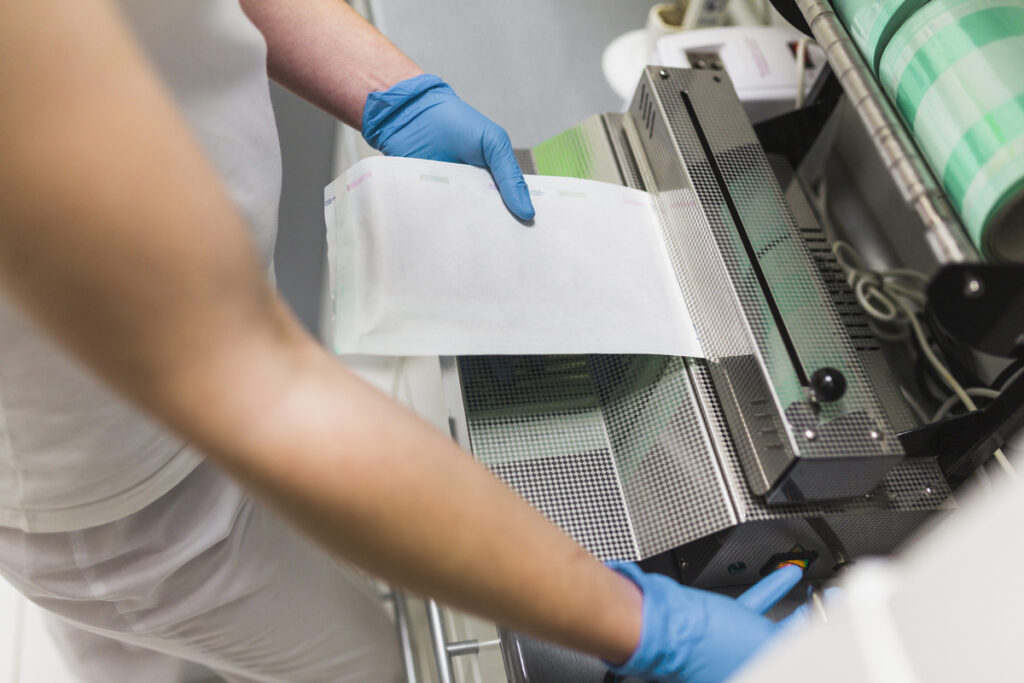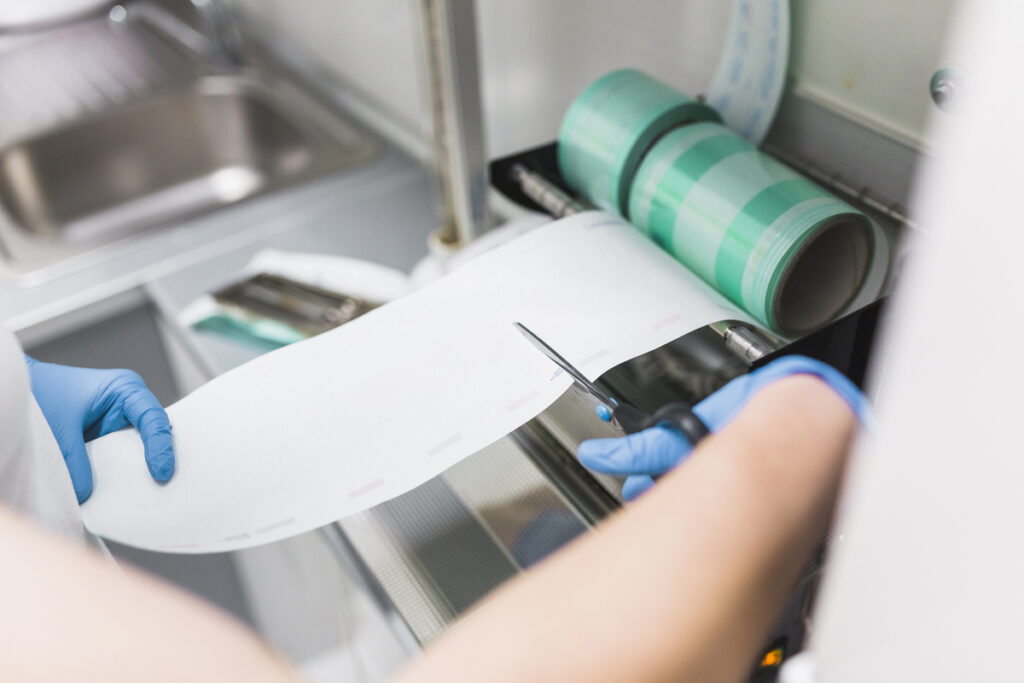What Is The Fuser On A Printer

Introduction
Fuser On A Printer: The fuser stands as a pivotal component that plays a critical role in producing high-quality printed documents. As an integral part of laser printers, photocopiers, and some inkjet printers, the fuser brings together the intricate processes of heat, pressure, and toner fusion, Fuser On A Printer transforming a mere digital representation into a tangible output.
At its core, the fuser is responsible for the final stages of the printing process, where the powdered toner is permanently adhered to the paper, creating crisp, smudge-resistant prints. This complex mechanism consists of various elements, including heating elements, rollers, and a control system, all working in unison to achieve precise toner bonding and flawless print quality.
The primary function of the fuser lies in its ability to melt the powdered toner particles and fuse them onto the paper’s surface. The heating elements within the fuser generate controlled heat, rapidly raising the temperature to the point where the toner particles liquefy. This molten toner is then pressed onto the paper by the fuser’s rollers, which simultaneously provide the necessary pressure to ensure a secure bond.
Additionally, the fuser’s control system closely monitors and regulates the temperature to prevent overheating and ensure optimal toner fusion. Through intricate sensors and feedback mechanisms, the fuser maintains a delicate balance, allowing for consistent and reliable performance throughout the printing process.
Understanding the functionality of the fuser is crucial not only for individuals seeking to comprehend the inner workings of printing devices but also for technicians and professionals involved in maintenance and troubleshooting. A thorough grasp of the fuser’s mechanisms empowers users to optimize print quality, address common printing issues, and extend the lifespan of their printing equipment.
The Fuser: An Essential Component of Printing Technology
The fuser is an essential component of printing technology, specifically in laser printers and photocopiers. Its primary function is to bond or fuse the toner onto the paper, ensuring that the printed image remains permanently fixed.
The fuser unit is typically located near the end of the printing process, after the toner has been transferred onto the paper. It consists of two heated rollers: a heated roller and a pressure roller. The toner particles, which are composed of plastic and pigment, are initially in a powdered form and are attracted to the paper by an electrostatic charge. However, to make the print permanent, the toner must be melted and fused onto the paper.
The fuser accomplishes this by applying heat and pressure to the paper as it passes between the two rollers. The heated roller, often referred to as the fuser roller, is internally heated to a high temperature, typically around 200-220 degrees Celsius. The pressure roller, also known as the backup roller, applies pressure to ensure proper contact between the paper and the heated roller.
As the paper travels through the fuser, the heat from the heated roller melts the toner particles, causing them to adhere to the paper fibers. The pressure from the pressure roller helps to create a smooth and even bond between the toner and the paper, resulting in a high-quality, permanent print.
Without a properly functioning fuser, the toner would not be securely fused onto the paper, leading to smudging, rubbing off, or easily erasable prints. The fuser is crucial in producing professional-looking documents and ensuring that printed materials are durable and long-lasting.

Exploring the Inner Workings of the Printer’s Fuser
The fuser consists of two main elements: a heated roller and a pressure roller. The heated roller, typically made of a hollow metal cylinder, is internally heated by a heating element. The purpose of the heating element is to raise the temperature of the roller to a specific level, typically around 200-220 degrees Celsius (392-428 degrees Fahrenheit).
During the printing process, the toner, which is a powdered form of ink, is applied to the paper by the printer’s imaging system. The paper with the toner then passes through the fuser unit. As the paper enters the fuser, it encounters the pressure roller, which presses it firmly against the heated roller.
The combination of heat and pressure causes the toner to melt and adhere to the paper fibers. The heat from the roller softens the toner particles, allowing them to fuse with the paper. The pressure roller ensures even contact between the paper and the heated roller, ensuring consistent and uniform fusion of the toner.
Once the toner is fused to the paper, it becomes resistant to smudging and rubbing. The paper then exits the fuser and proceeds to the output tray. The fuser’s precise temperature control and uniform pressure distribution are crucial in achieving high-quality, durable prints.
The Fuser’s Role in Achieving High-Quality Prints
The fuser plays a critical role in achieving high-quality prints in a printer. Located within the printing mechanism, the fuser is responsible for permanently bonding the toner or ink to the paper. It ensures that the printed image remains intact and doesn’t smudge or smear easily.
The fuser consists of two main components: a heated roller and a pressure roller. The heated roller is typically coated with a non-stick material, such as Teflon, and is heated to a specific temperature. The pressure roller, on the other hand, applies pressure to the paper as it passes through the fuser.
During the printing process, the paper with the toner or ink image passes between the heated roller and the pressure roller. The heat from the heated roller melts the toner or ink particles, while the pressure roller presses the paper against the heated roller, ensuring proper adhesion of the toner or ink to the paper fibers. As a result, the image becomes fused with the paper, creating a permanent and smudge-resistant print.
The fuser’s temperature is carefully controlled to prevent excessive heat that could damage the paper or cause the toner to over-melt, leading to poor print quality. Additionally, the fuser must be designed to accommodate different paper types, sizes, and weights to ensure consistent and reliable print results.
Unveiling the Heat and Pressure Fusion of the Fuser
The heat element of the fuser plays a vital role in melting the toner particles, which are essentially a fine plastic powder. As the paper with the printed image passes through the fuser assembly, it encounters heated rollers or a heated roller and a pressure roller. These rollers are heated to a specific temperature, typically between 180 to 220 degrees Celsius (356 to 428 degrees Fahrenheit), depending on the printer model.
As the paper enters the fuser, it comes into contact with the heated roller(s). The heat softens the toner particles, allowing them to melt and adhere to the fibers of the paper. The pressure roller, which is typically made of a silicone material, applies pressure to ensure proper contact between the paper and the heated roller(s). The pressure helps to create a strong and permanent bond between the toner and the paper.
The combination of heat and pressure fusion in the fuser is carefully calibrated to avoid damaging the paper while ensuring effective toner adhesion. The fuser’s temperature and pressure settings are optimized for different types of paper and printing requirements.

How the Fuser Makes Toner Stick to Paper
The fuser consists of two main components: a heated roller and a pressure roller. These rollers work together to apply heat and pressure to the paper as it passes through the printing mechanism. The heated roller is typically coated with a non-stick material such as Teflon to prevent the toner from sticking to it.
As the paper passes through the fuser, it enters the nip or the point of contact between the two rollers. The heated roller, which is heated to a precise temperature, comes into contact with the toner on the paper. The heat causes the toner particles to melt and become fluid.
At the same time, the pressure roller applies pressure to the paper, ensuring that the toner is firmly pressed onto the paper fibers. This combination of heat and pressure allows the toner to bond with the paper, creating a permanent image.
Once the paper exits the fuser, the toner has cooled down and solidified, resulting in a smudge-resistant and durable print. The fuser’s ability to precisely control the temperature and pressure is crucial in achieving high-quality prints with excellent adhesion.
The Fuser: Merging Technology and Precision for Flawless Prints
When a print job is sent to the printer, the paper carrying the image or text passes through the fuser assembly. The pressure roller presses the paper against the heat roller, creating a tight contact. Simultaneously, the heat from the roller melts the toner particles, allowing them to fuse with the fibers of the paper.
To ensure flawless prints, the fuser must maintain precise temperature control. Modern fusers employ advanced technology such as sensors and thermostats to regulate the temperature accurately. This temperature control prevents overheating, which can lead to paper jams, smearing, or damage to the printer.
Additionally, the fuser incorporates various mechanisms to ensure optimal performance. These mechanisms include anti-static properties to prevent toner from sticking to the rollers, release agents to facilitate smooth paper separation, and quick cooling systems to reduce waiting time between print jobs.
Understanding the Fuser’s Control System for Optimal Performance
The fuser’s control system is a crucial aspect of a printer’s functionality, ensuring the fuser operates at the right temperature and pressure to deliver optimal performance. It plays a vital role in maintaining print quality, preventing paper jams, and protecting the printer from potential damage.
Temperature control is one of the key elements in the fuser’s control system. It is typically achieved through the use of sensors and thermostats that monitor and regulate the temperature of the fuser rollers. These sensors provide feedback to the control system, allowing it to adjust the heat output as needed. By maintaining a consistent temperature, the control system ensures that the toner particles melt and fuse properly without causing paper curling, smudging, or other print defects.
Pressure control is equally important to ensure efficient fusing. The control system monitors and adjusts the pressure applied by the pressure roller to the heat roller. It ensures that the pressure is sufficient to create a tight bond between the toner and the paper, but not excessive to the point of damaging the paper or causing jams. By carefully controlling the pressure, the control system contributes to precise and consistent fusing.
Modern printers often employ sophisticated control algorithms to optimize the fuser’s performance. These algorithms analyze various factors such as paper type, print density, and fuser temperature to determine the ideal settings for each print job. This adaptive control system ensures that the fuser operates at its best in different printing conditions, resulting in high-quality prints with accurate colors and sharp details.

Troubleshooting Common Printing Issues Related to the Fuser
The fuser is an essential component in laser printers and some copiers that plays a crucial role in the printing process. It is responsible for permanently bonding the toner to the paper, ensuring that the printed documents come out with crisp and durable text or images. However, like any other printer component, the fuser can encounter issues that may affect the print quality or cause operational problems. Here are some common troubleshooting steps for addressing fuser-related printing issues:
Poor print quality: If you notice smudging, smearing, or incomplete toner fusion on the printed pages, it could indicate a fuser problem. First, make sure you are using the correct paper type and settings for your printer. If the problem persists, the fuser roller may need cleaning or replacement.
Paper jams: A malfunctioning fuser can cause frequent paper jams. Start by checking for any obstructions in the paper path, such as torn pieces of paper or foreign objects. If the fuser roller is damaged or worn out, it may not grip the paper properly, leading to jams. In such cases, replacing the fuser unit may be necessary.
Error messages: Certain printer models display error codes or messages related to fuser issues. Consult your printer’s manual or the manufacturer’s website to identify the specific error and recommended solutions. In some cases, a simple power cycle or resetting the printer may resolve the problem.
Overheating: If your printer frequently shuts down or displays overheating warnings, it could be due to an overheating fuser. Ensure that the printer is placed in a well-ventilated area and not near sources of heat. Clean any dust or debris around the fuser unit to promote proper airflow.
Conclusion:
The fuser is an essential component of a printer that plays a crucial role in the printing process. It is responsible for permanently bonding toner or ink to the paper, ensuring that the printed image or text remains intact and durable. By applying heat and pressure, the fuser melts the toner particles, allowing them to adhere firmly to the paper.
The fuser consists of two heated rollers, typically made of a silicone rubber material. As the paper passes between these rollers, it is subjected to intense heat, which melts the toner. Simultaneously, the pressure exerted by the rollers ensures proper contact between the paper and toner, creating a permanent bond.
The fusing process is vital for producing high-quality prints that are resistant to smudging, fading, or rubbing off. Without a properly functioning fuser, printouts would be of poor quality, with toner easily smearing or flaking off the paper.
Different printer technologies employ varying fusing methods. Laser printers use heat to fuse toner to paper, while inkjet printers utilize heat and pressure to dry the ink onto the page. Regardless of the technology, the fuser remains a critical component in achieving professional and reliable print results.
Regular maintenance and proper care of the fuser are essential to ensure its longevity and optimal performance. Over time, the fuser may accumulate toner residue or suffer wear and tear, requiring cleaning or replacement. It is advisable to follow the manufacturer’s recommendations for fuser maintenance to maximize the printer’s lifespan and maintain print quality.

